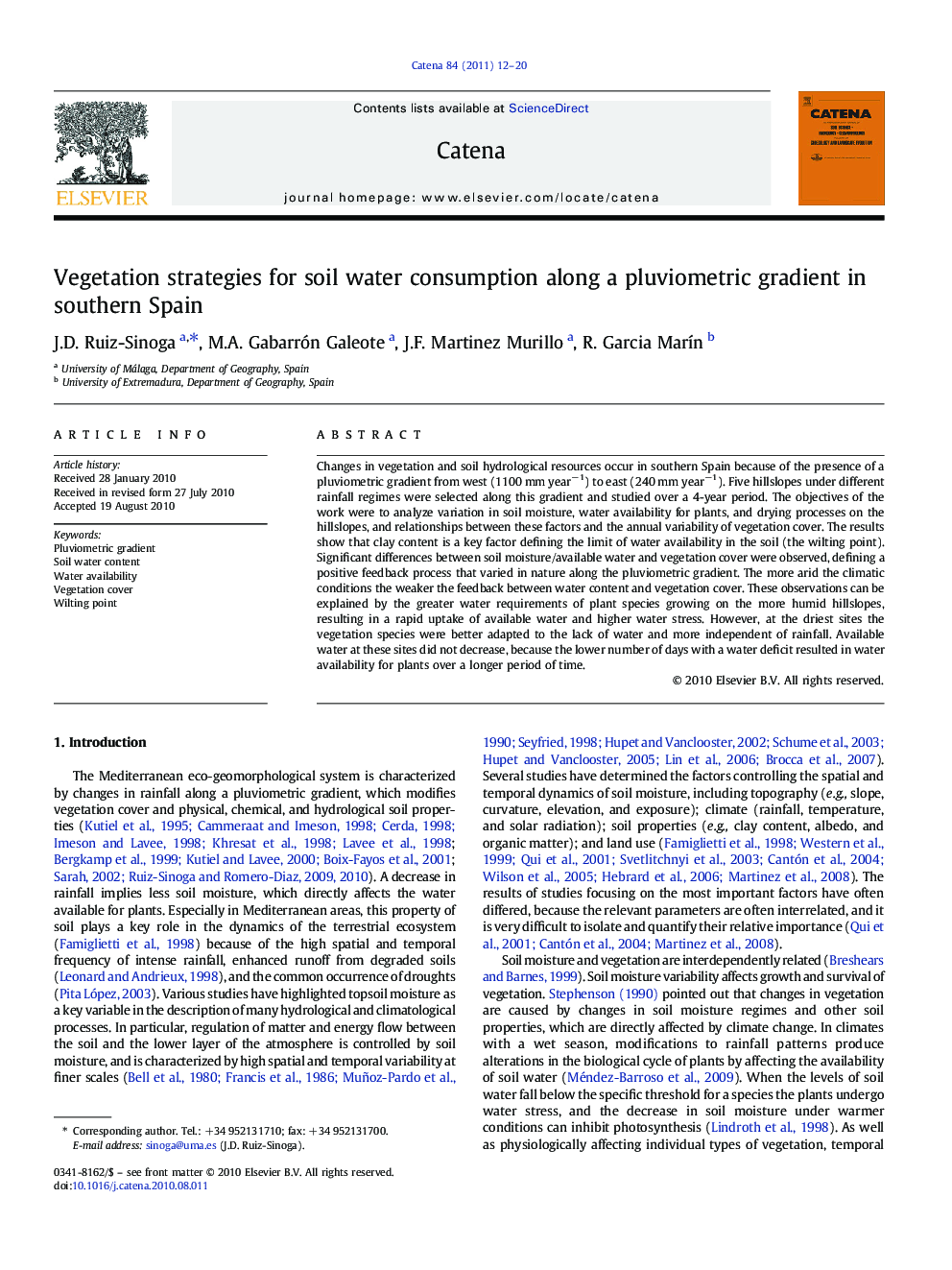| Article ID | Journal | Published Year | Pages | File Type |
|---|---|---|---|---|
| 4572139 | CATENA | 2011 | 9 Pages |
Changes in vegetation and soil hydrological resources occur in southern Spain because of the presence of a pluviometric gradient from west (1100 mm year−1) to east (240 mm year−1). Five hillslopes under different rainfall regimes were selected along this gradient and studied over a 4-year period. The objectives of the work were to analyze variation in soil moisture, water availability for plants, and drying processes on the hillslopes, and relationships between these factors and the annual variability of vegetation cover. The results show that clay content is a key factor defining the limit of water availability in the soil (the wilting point). Significant differences between soil moisture/available water and vegetation cover were observed, defining a positive feedback process that varied in nature along the pluviometric gradient. The more arid the climatic conditions the weaker the feedback between water content and vegetation cover. These observations can be explained by the greater water requirements of plant species growing on the more humid hillslopes, resulting in a rapid uptake of available water and higher water stress. However, at the driest sites the vegetation species were better adapted to the lack of water and more independent of rainfall. Available water at these sites did not decrease, because the lower number of days with a water deficit resulted in water availability for plants over a longer period of time.
Research Highlights► Soil water availability under various climatic conditions (from sub-humid to semiarid Mediterranean climate) was related to water supply (rain), plant transpiration, and soil properties (clay content). ► The dominance of biotic versus abiotic factors shifted at a rainfall threshold of 450 mm year−1. ► At the driest areas, soil water was retained longer because of a low transpiration rate, whereas at the wettest sites water use by plants resulted in very dry soils. ► A reduction in vegetation cover was either a water use adaptation to drier environments, or occurred because of land degradation and/or climate change.
